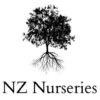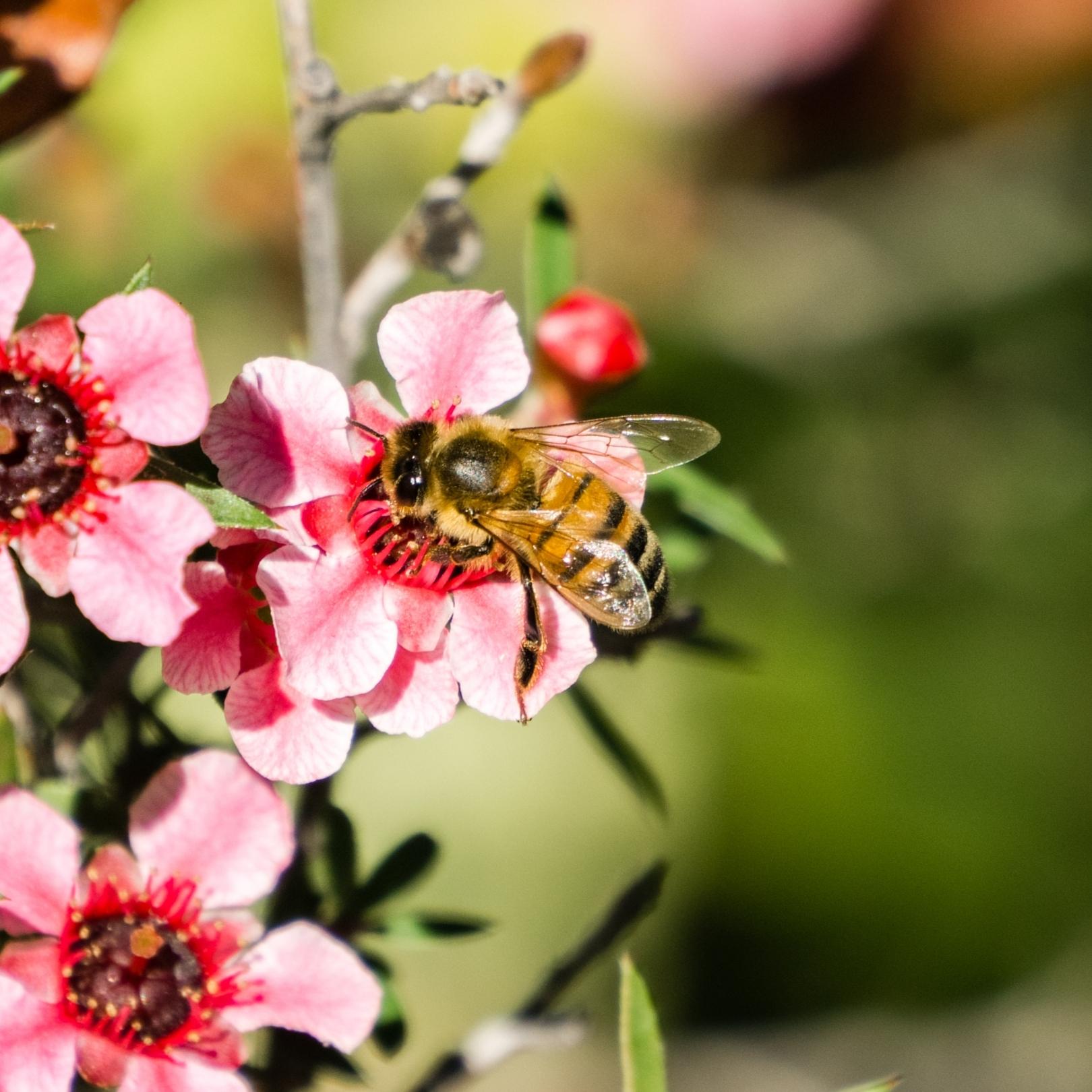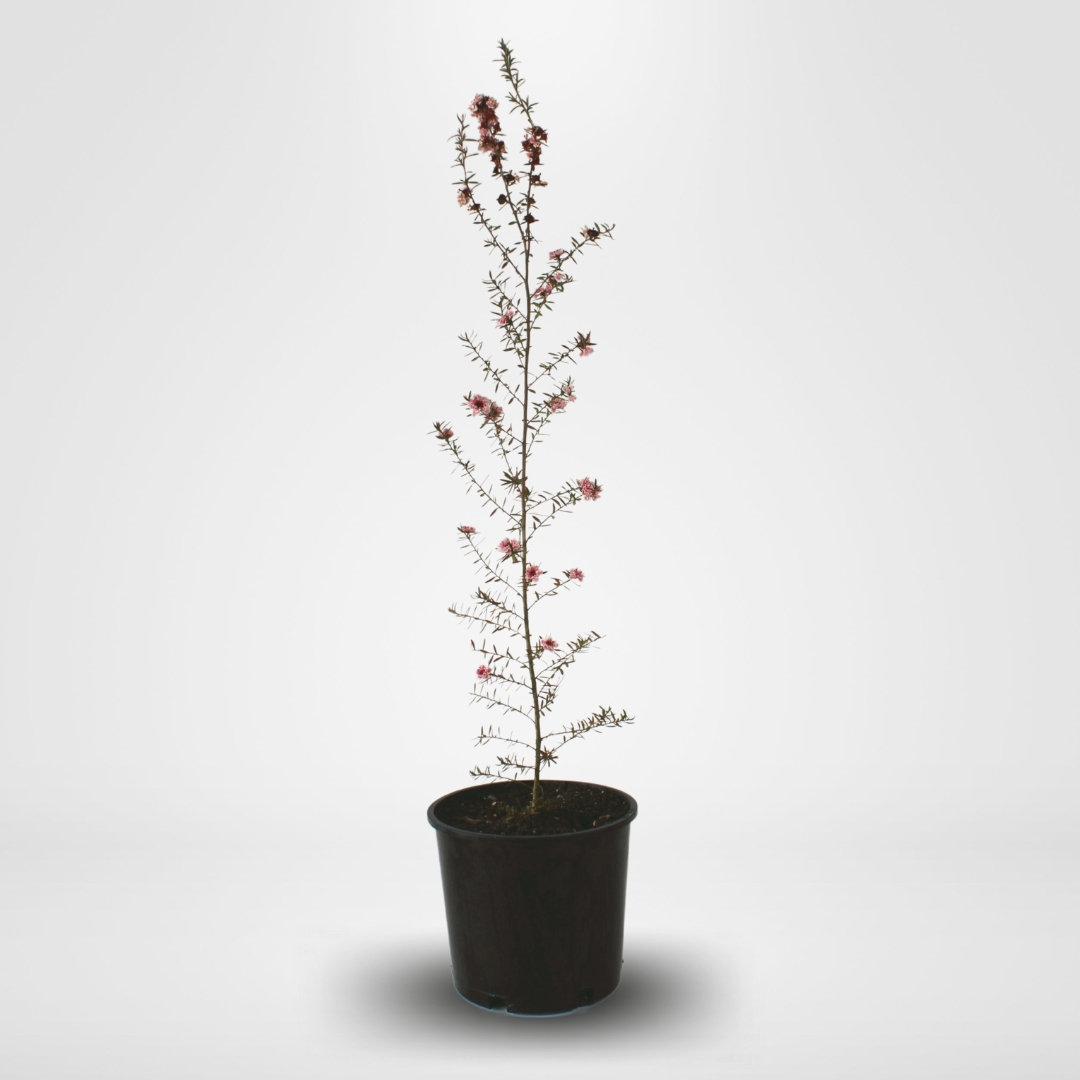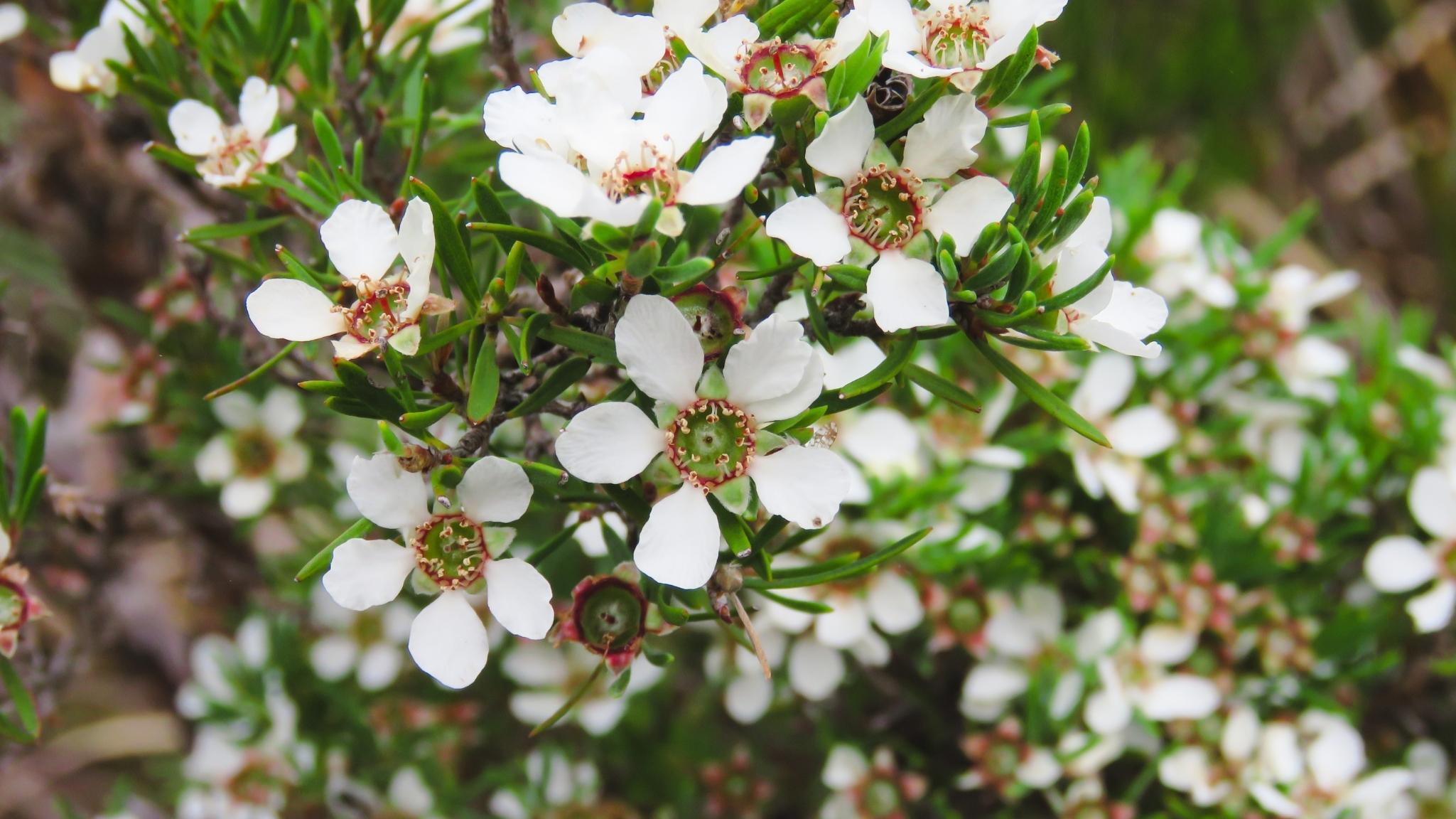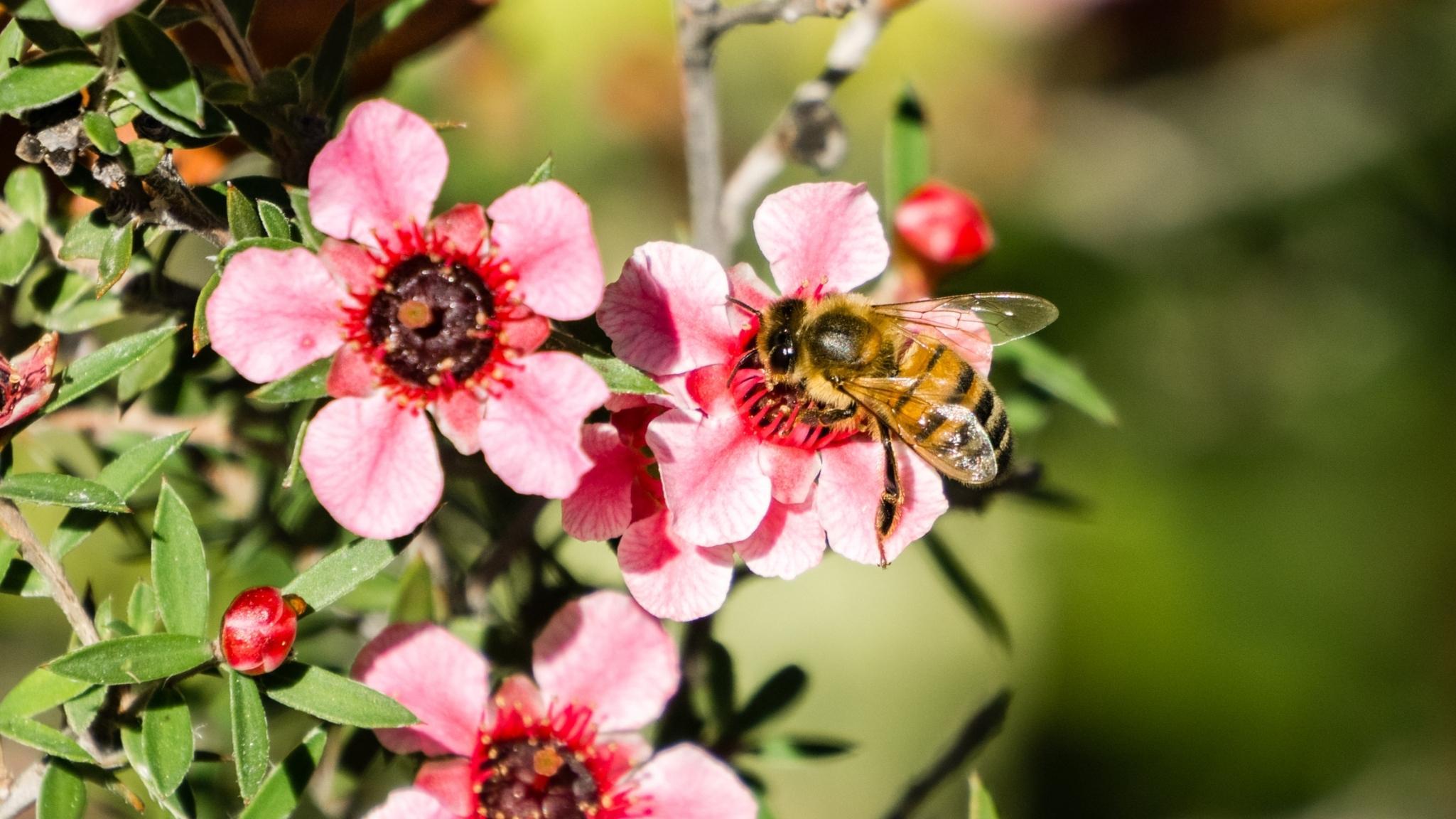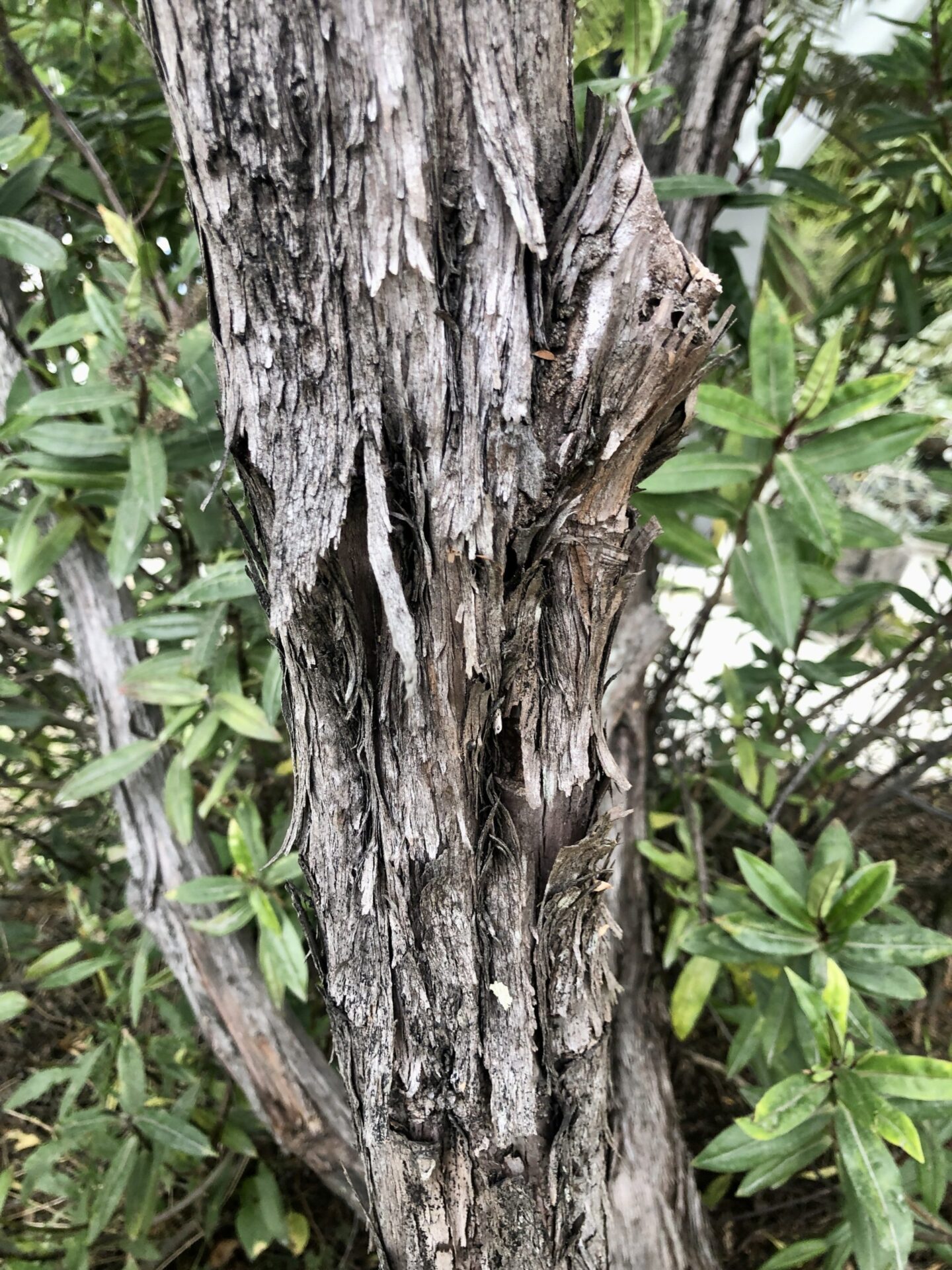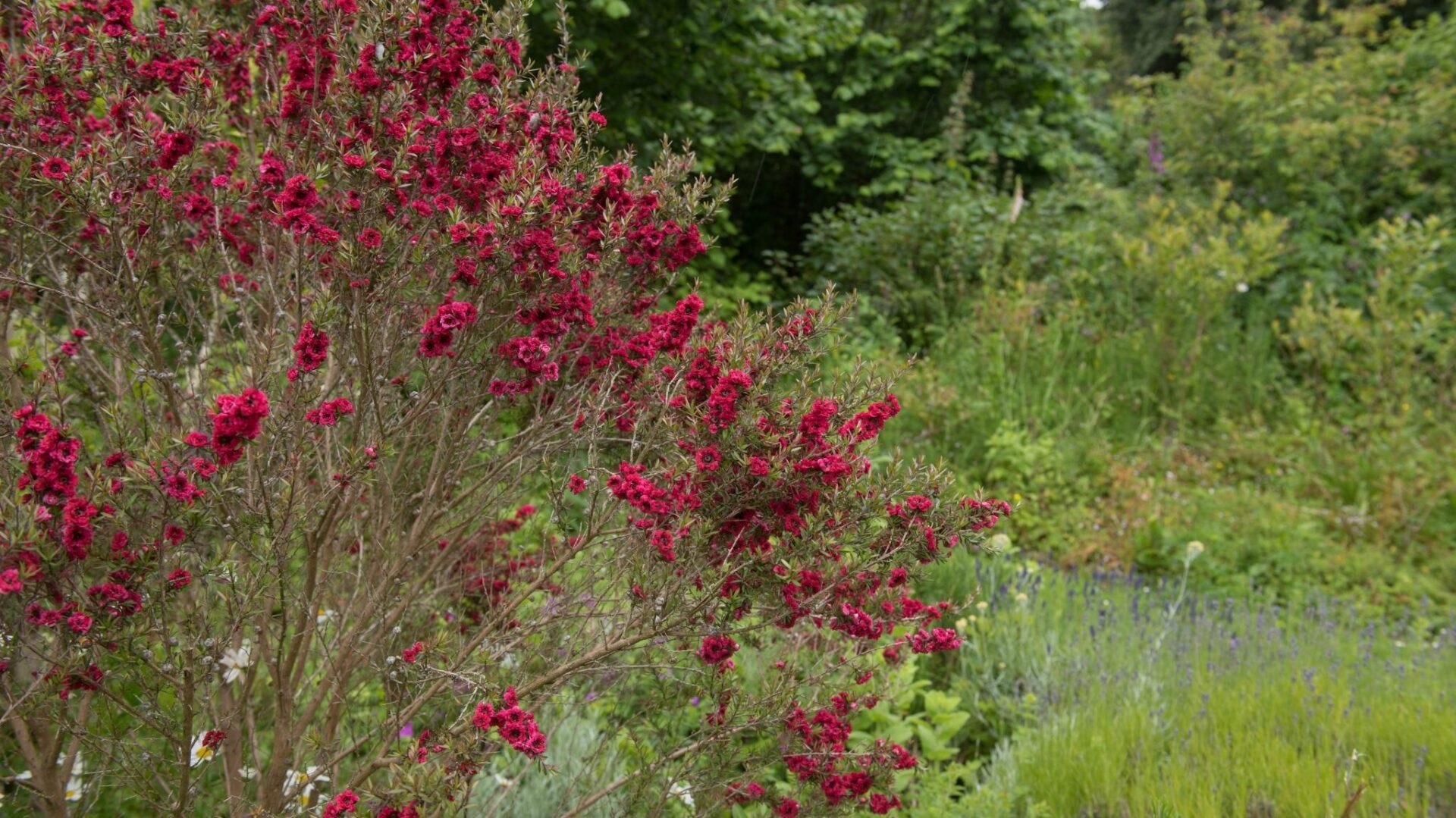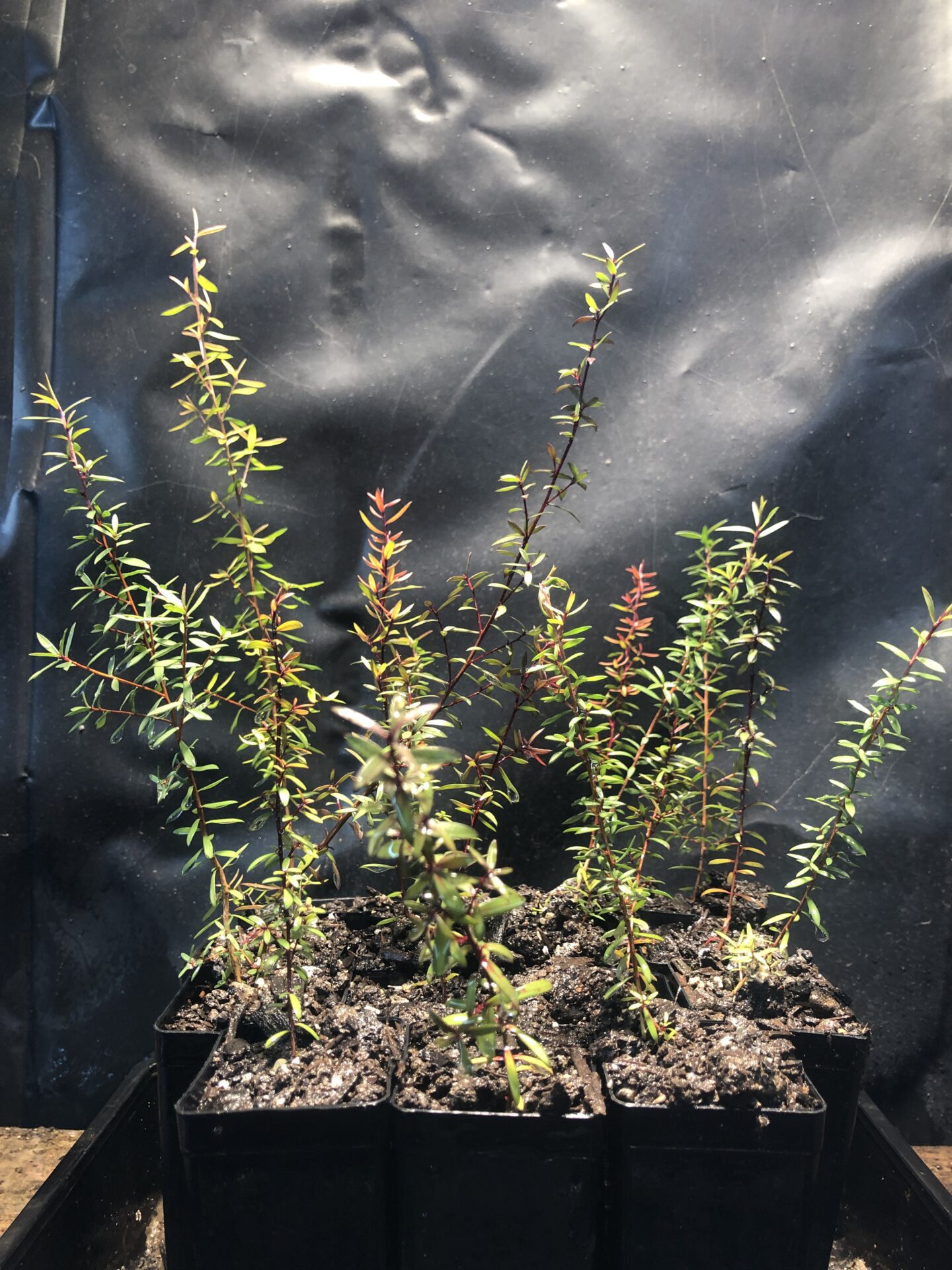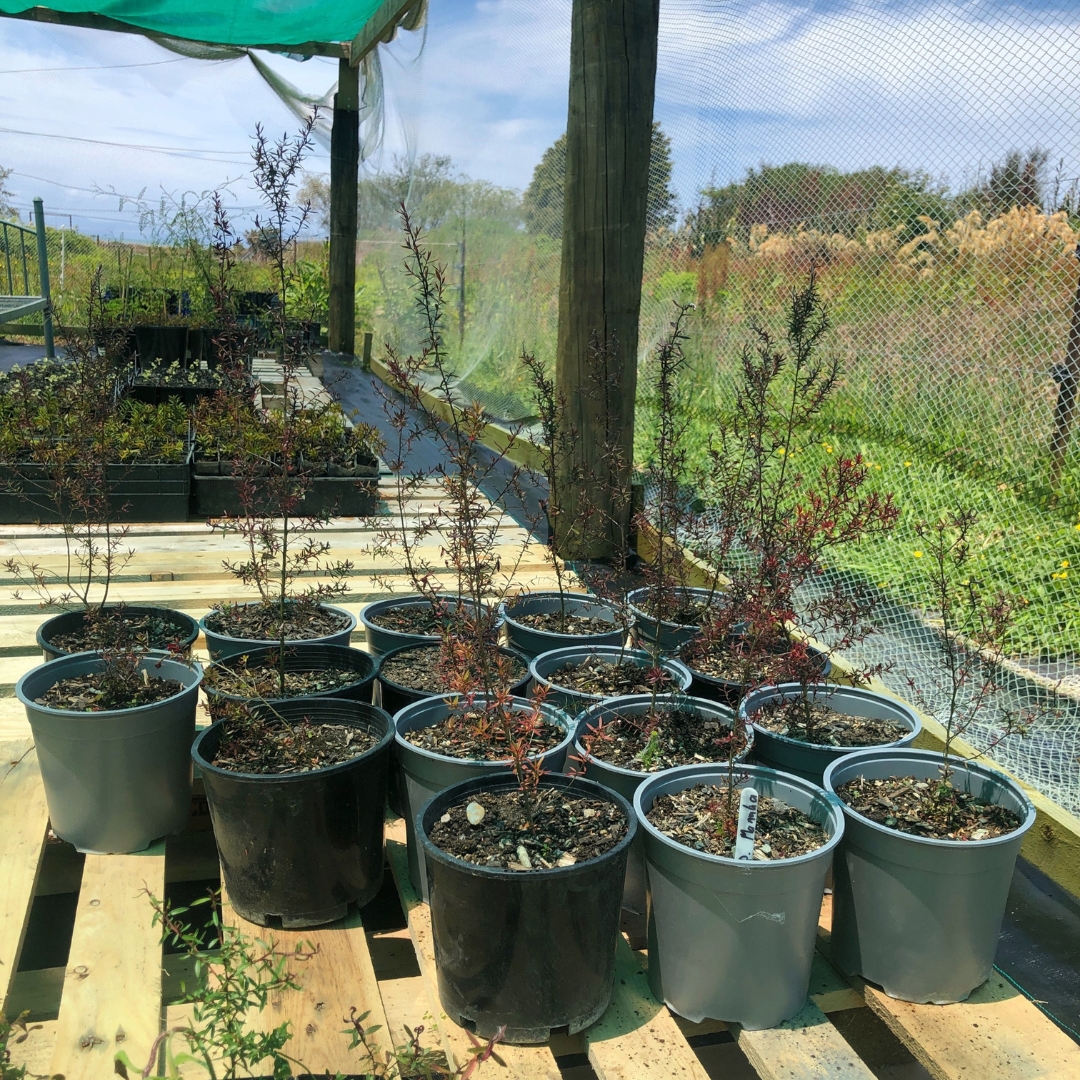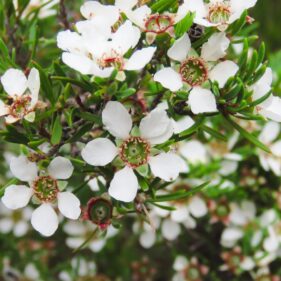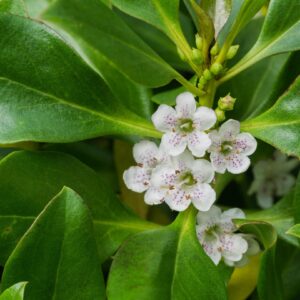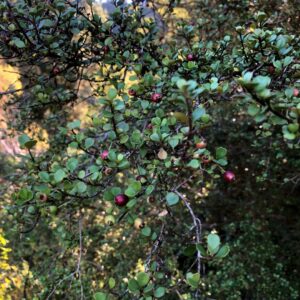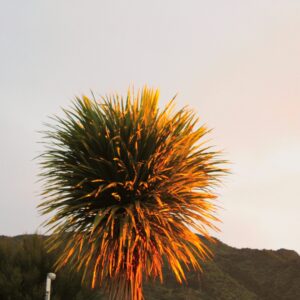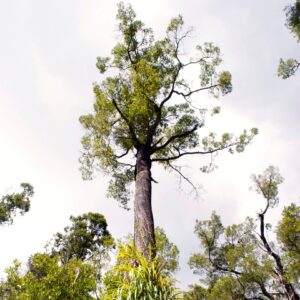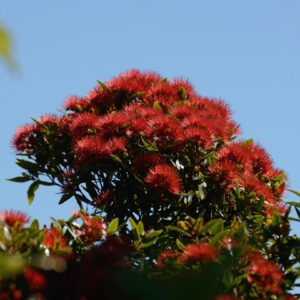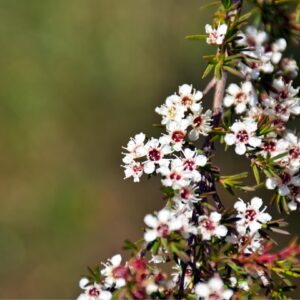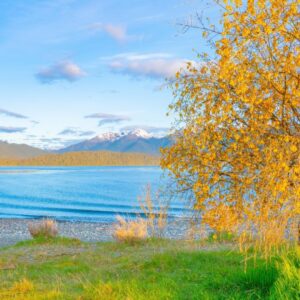Common Name: Manuka
Scientific Name: Leptospermum scoparium
Height at Maturity: 2 – 5 meters
Time to Maturity: 10 years +
Growth Rate: Medium
Habitat: Growing throughout NZ in altitudes up to 1800m in basically all soil types, it is a great regenerative tree.
Domesticated Uses: Beautiful tree in the garden, especially to help out the bees and geckos.
Medicinal Uses: Well established for medicinal honey with great skin, cough and digestive properties.
Forest Uses: Fantastic for regenerative areas in cleared land, slips and fires. One of the first trees to come back and create a natural nursery for the second generation of the forest to come through.
Flowering: November to January
Fruiting/Nectar: ~December
Birds Life: Manuka provides food sources for bees and insects. The insects in turn support a bird population.
Planting Instructions: Once they are of a reasonable size they can be planted. Make sure they are kept free of weeds until they can get on top of them. Great for beating gorse.
Waterway management: Due to the antimicrobial properties in the roots (similar to those that end up in the honey), Manuka and Kanuka roots extracts E Coli and other pathogens after 5 and 8 days respectively. This is compared to Rye grass (pasture) taking 93 days. Also provides significant reductions in Nitrogen runoff. Read more here
Read more on Manuka and also the difference between Manuka and Kanuka
